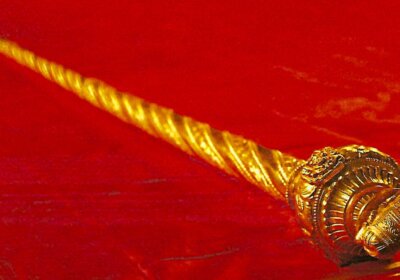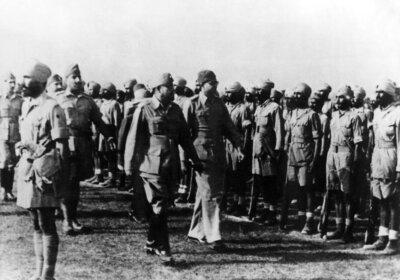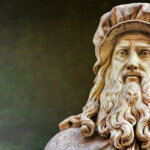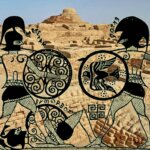One thing that most of us know of the world we live in is computers and how connected everything has become. This modern world of technology started with something called binary code. In many ways, this was like the key that unlocked the door to turning computers into what they are today. Before computers, people were using things like an abacus, which had a way to be advanced with calculators, but essentially they were still counting on their fingers and toes.
The binary system is a number system that uses two digits, 0 and 1, to represent all numbers. The binary system is the most basic form of computer language, meaning it is the easiest way to understand how computers process information.
The binary system is used in computing because it is easy to use and understand. It is also efficient: it allows computers to perform calculations much faster than they would if they were using another number system, such as base ten (the same system we use for counting).
The term ‘bit’, the smallest possible digital technology unit, stems from “BInary digiT.”
There are many different ways that you can use binary systems in computing. One of these is called “bitwise operations,” which allows programmers to perform certain functions on individual bits of data simultaneously instead of on whole bytes or words. Another common practice is called “bit shifting,” which involves changing the position of certain bits within a byte without changing their value.
The earliest uses of binary systems were found in ancient texts like Hindu-Arabic numerals (1s and 0s) and Chinese characters (black ink on white paper). The first use of a binary system was by ancient Egyptians, who used hieroglyphs to record information on papyrus scrolls.
Binary was also used by early philosophers such as Aristotle and Plato to describe logical statements, while philosophers like John Locke used binary systems to describe human thought processes. In 1854, George Boole published a treatise called “An Investigation into Laws of Thought,” which proposed that human thought followed specific rules and could be reduced to mathematical equations. He also developed “lines of reasoning”, later known as Boolean algebra (named after him).
In 1889, Gottfried Leibnitz suggested using his invention called the “binary alphabet” to represent the “yes” and “no” answers of Boolean algebra. Inventors later used this system to design and create the first computers.
Binary systems are being used in many different modern day electronics and technologies like:
Digital Computers
The Binary System is incredibly powerful, especially when you put it in context with computers. Computers are machines that can store and process information by following predetermined instructions. To do this, they need to understand data and how it should be stored or processed. That is where binary comes in; it allows computers to understand what data is without needing any other information about it besides its true/false state.
This means that everything on your computer, from your music library to the photos you have taken, is just a series of 1s and 0s stored on hard drives everywhere.
Astronomical Events
The binary system has been used for a variety of astronomical events. The binary system determines the length of time it takes for an object to orbit another object, such as a planet or star. It is also used to measure distances between objects in space. Astronomers have used the binary system since the 19th century. In 1838, Friedrich Bessel published his work on measuring the parallax of stars, which was done using the binary system.
The binary system is used to measure the distance between objects in space. This is done by using parallax, a shift in an object’s position when viewed from different points in space. This is done because it allows astronomers and scientists to determine how far away an object is.
Data Transmission Between Devices
The binary number system is used to transmit data between devices. Its simple structure makes it easy to use, understand and calculate without having to do any complex maths. This makes it ideal for transmitting information between devices and storing that information in memory. The binary system is the most common number system in use today. It is used for computers, calculators and many other devices that require a way to store and transmit information. It is also used in computer networks and communication protocols like Ethernet and Wi-Fi because these systems use binary numbers to transmit information between devices.
GPS Systems
GPS stands for Global Positioning System and uses satellites to provide accurate location information. The binary system translates the satellite’s radio signals into the latitude, longitude, and altitude data displayed on your smartphone or tablet. The GPS uses the same binary system invented by George Boole in the 19th century to calculate directions. The binary system uses the digits 0 and 1, called bits. Each bit represents one of two possible states: on or off, true or false; yes or no. The GPS can receive radio signals hundreds of miles away from satellites because it uses a similar binary code.
Routers and Networking Technologies
The binary system is used in a wide variety of technologies today. Routers and networking technologies are some of the most prominent uses for binary math.
Routers are used to send information from one device to another. They use binary math to determine what data is being sent and where it is going. A router may receive a packet split up into multiple pieces; the router then identifies each piece by its address, determines where it should go next, and forwards it.
Routers also use binary math to identify whether or not the target device has successfully received a message. Suppose there is no response from a device after receiving a packet. In that case, this indicates either an error in transmission or something during delivery that prevented the reception of the message.
Conclusion
Binary numbers have been used in human cultures for many years. In modern times, binary notation is the foundation of virtually all digital technology. From the lightning-fast computer processors to the code that sends spacecraft to distant planets, from medical scanners and industrial robotics to consumer electronics and telephones, binary technology touches almost every part of our lives.
For more tech updates stay hooked to Panchayiti























Leave a Reply